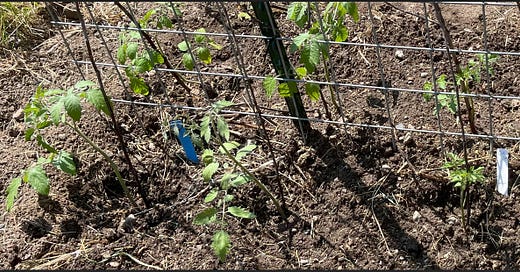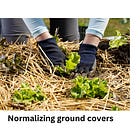Seeding and Transplanting Methods That Keep Your Garden Producing All Season Long
Continuous growth. Continuous food.
I always find it hard to believe that the summer solstice, the longest day of the year, comes and goes before the main heat of summer even (normally) begins where I live here in southern British Columbia. July and August are the main hot months for ripening up crops like tomatoes and peppers, and for producing sweet corn.
It’s been a rather cold, stormy and rainy solstice for me, preventing me from working on my garden renovation. But who knows? Maybe this afternoon there will be a break in the weather that’s long enough for me to get another row of tomatoes in?
Once my tomatoes are finally on their trellises, what comes next for me is transplanting out the rest of my starts still waiting impatiently in pots for their garden space. For heavens sake, have little zucchini’s forming on my plants in pots at this point. Everyone is ready for the garden to be planted already!
That’s why today I thought I would talk about how I go about planting my garden, and provide some tips on how to keep the flow of planting and transplanting going all season long.
Filling up the garden
I like to use wide rows (3-4 ft wide by however long my space allows). I plant following the principles of Square Foot Gardening - first introduced by Mel Bartholomew - now in a 4th edition of printing (Amazon affiliate link). But I learned from the original, published in 1981, which is still my favorite version.
In square foot gardening, the idea is to plant in blocks rather than rows. This maximizes the number of food plants per square foot, and minimizes the room for weeds to grow. It doesn’t matter if my garden has been a tiny plot in a backyard or something much larger, I’ve used these methods for years to achieve more food and less weeds.
Each square has a basic planting geometry. A single large plant like broccoli needs a whole square (and sometimes more) all to itself. But smaller plants get planting essentially using positions like you would find on dice faces:
Dice dots are not a perfect analogy, consider the three dice versus how it would make sense to plant 3 plants in a square, but you get the idea. You can go as high as 4x4 to make 16 plants in a square if you are spacing out green onions. The most frequently used patterns in my garden are one, two, four, five and nine. And it is important to consider that a very large plant like a zucchini might actually need two to four whole squares just for itself.
The beauty of the pattern is that you know exactly where your sprouts will show up, which means if there are plants not in the dice-formation, then those are weeds and they can be removed. When you mulch, you add materials around the little plants to fill in the gaps on the dice face.
The sequence goes: Plant - Wait for sprouts - Weed - Mulch - Grow - Harvest
In real life it looks something like this:
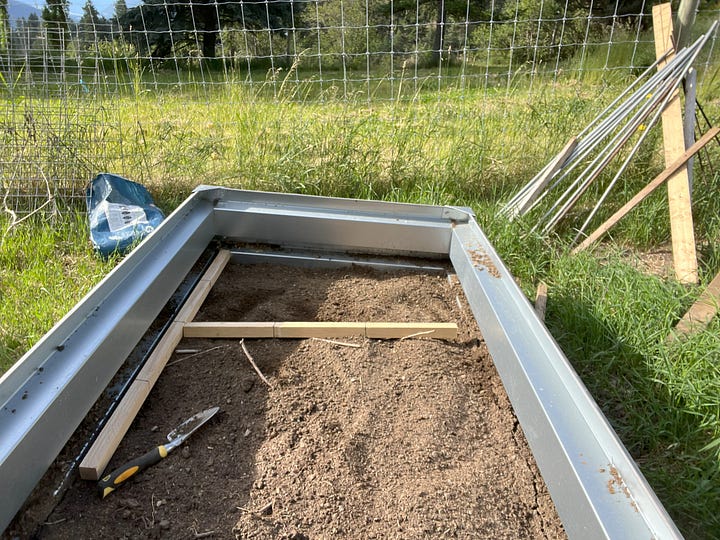
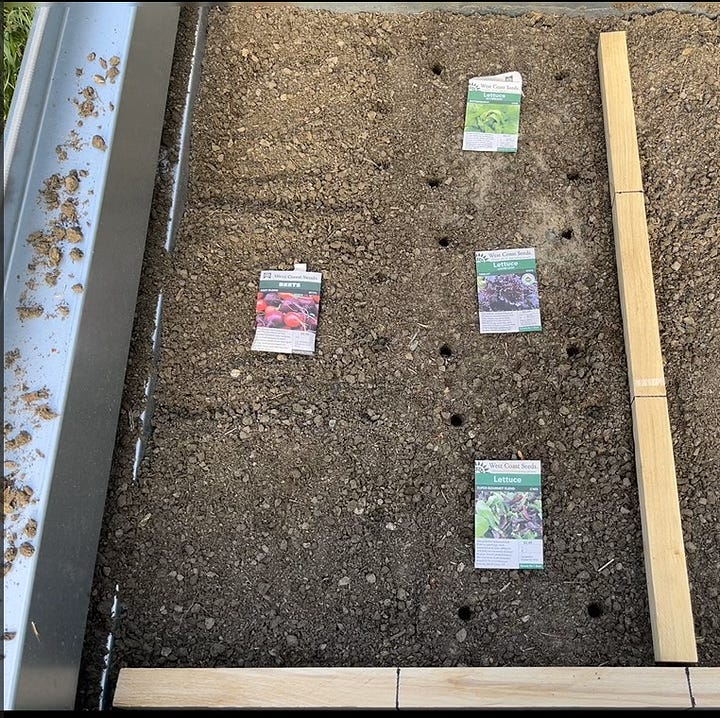

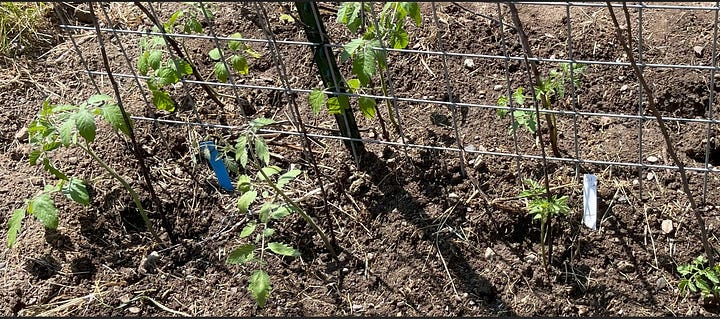
The idea then becomes for short season plants that you harvest up fast (think arugula, radish, lettuce, spinach, beets, onions, carrots, etc.), you simply harvest up the food and then replant the square to another (different) type of plant OR add a transplant into that space.
For example in the early spring, you might start off with spinach or arugula in the space. And then once harvested, use that space for cucumbers, beans, peppers or some other hot season plant. (For a list of cold season and hot season plants, read this post).
By thinking about your garden one square foot at time, you can change both your mindset and your production value of the garden. Believe me, it is a LOT easier to think about weeding one square foot or one 4x8 bed, than to think about having to weed the whole garden!
Breaking the garden into sections, thinking about how food will flow through each row and each section of the garden, gives higher value results. And if you are wise and keep a garden journal, you will maximize your results from one year to the next as well.
If you are new to gardening, and would like a practical step-by-step guide for implementing this planting method to create a continuous flow of greens, check out my Get Started Garden Mini-course . This is a 30-day gardening guide that teaches you the principles of continuous succession planting in a small space.
Seeding vs Transplants
With seeded plants, I wait until the new plants are growing well before weeding and mulching. To me it is critical to weed and then mulch right away. The mulch suppresses further weed growth while feeding the soil and retaining water.
With transplants, I wait about a week before weeding and mulching, to give the plants time to settle in and to make sure they are well watered before topping off the soil with mulch. If it is going to be crazy hot though, sometimes immediate deep watering and mulching are called for.
Create biodiversity with ease
I also like to use this planting method to spread out my plants around the garden and within rows. This practice of block planting and distributing blocks helps to minimize pest problems because it creates higher biodiversity and encourages predator insects to establish in the garden.
Videos!?
For my paid subscribers, I am starting to do videos (below) which demonstrate some of the methods I’ve described here. There are two videos shared below - one for seeding the raised bed and one for transplanting broccoli into the raised bed.
To view the videos and support my work, become a paid subscriber.
Happy gardening and happy solstice!


